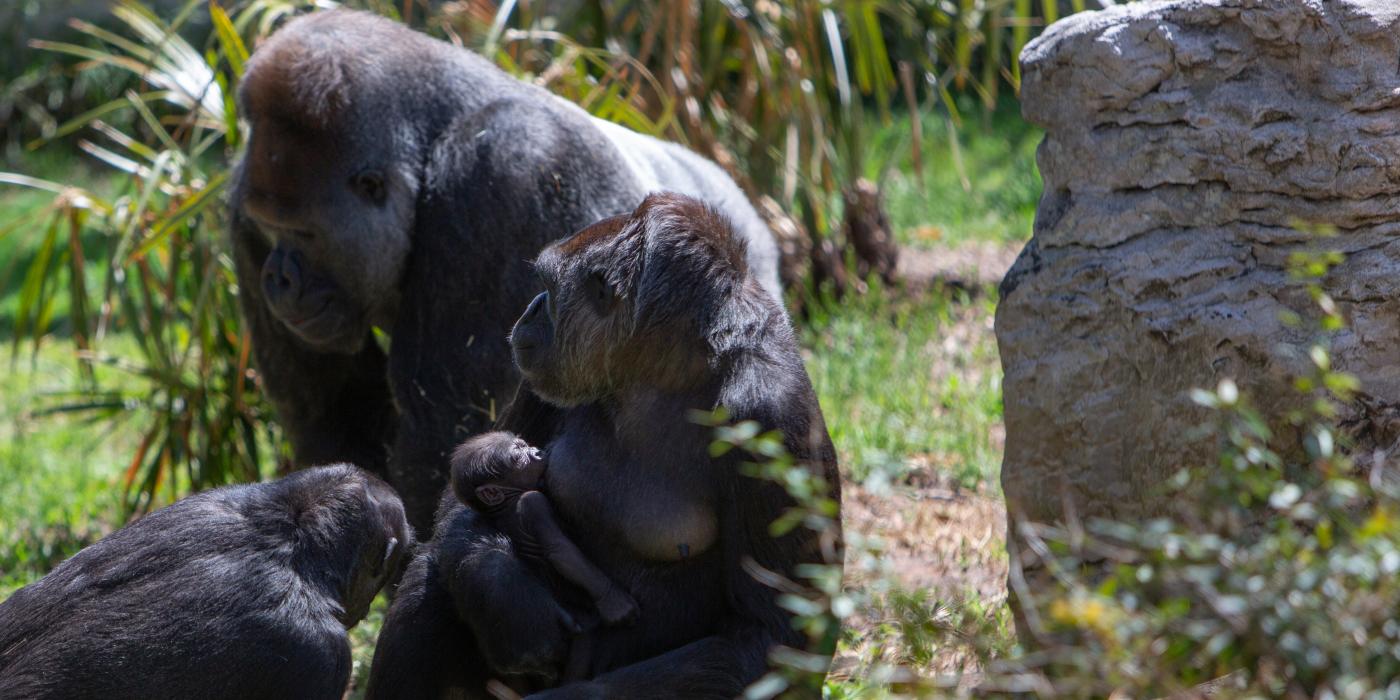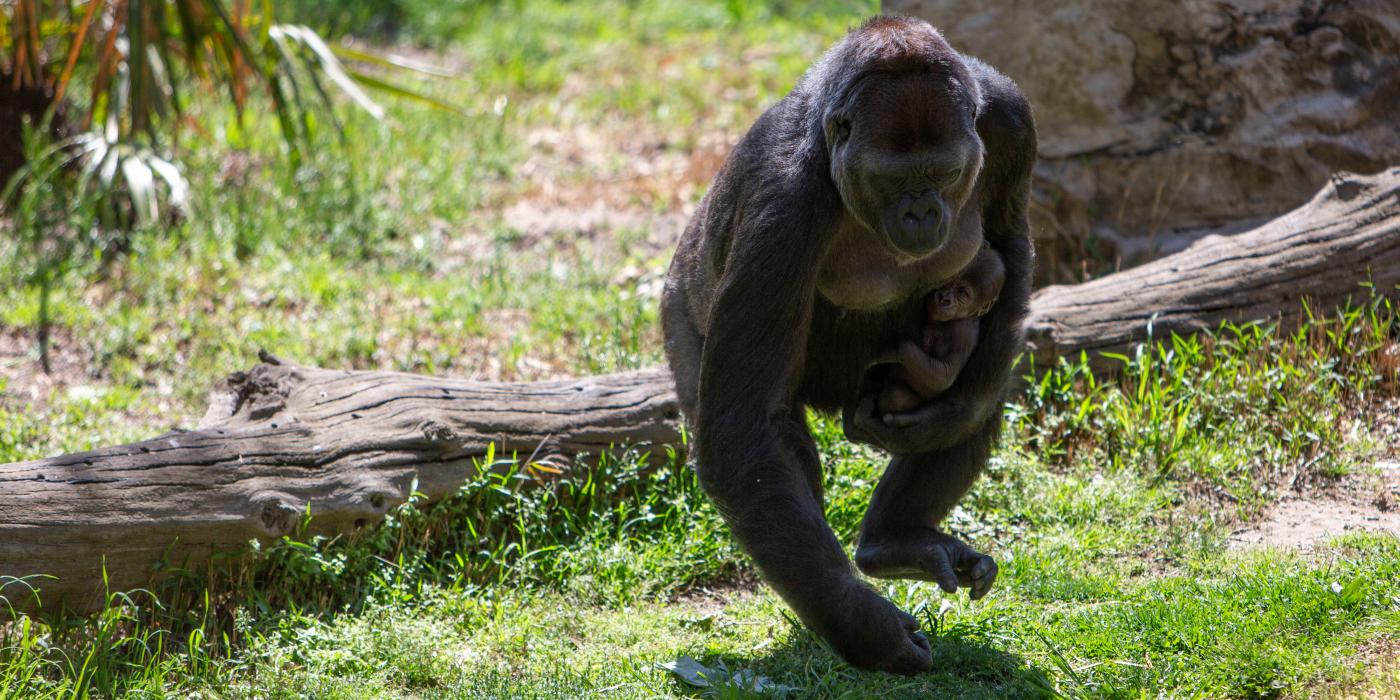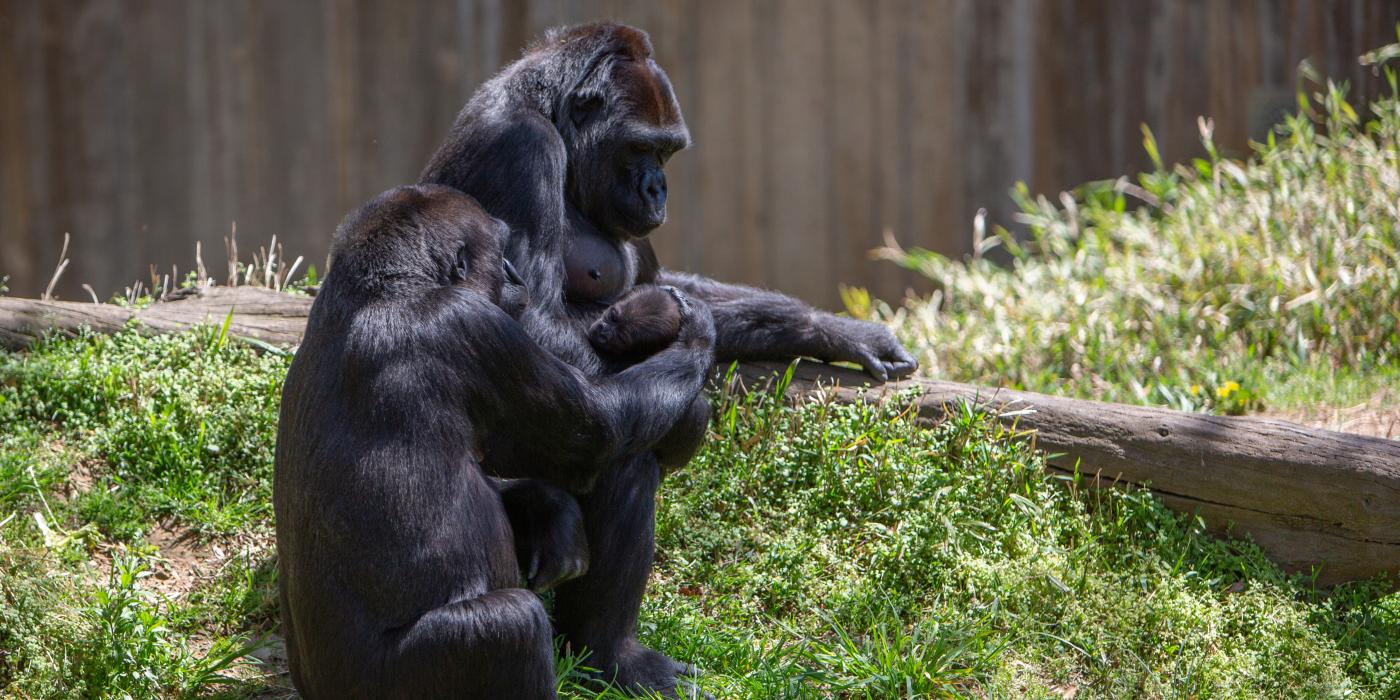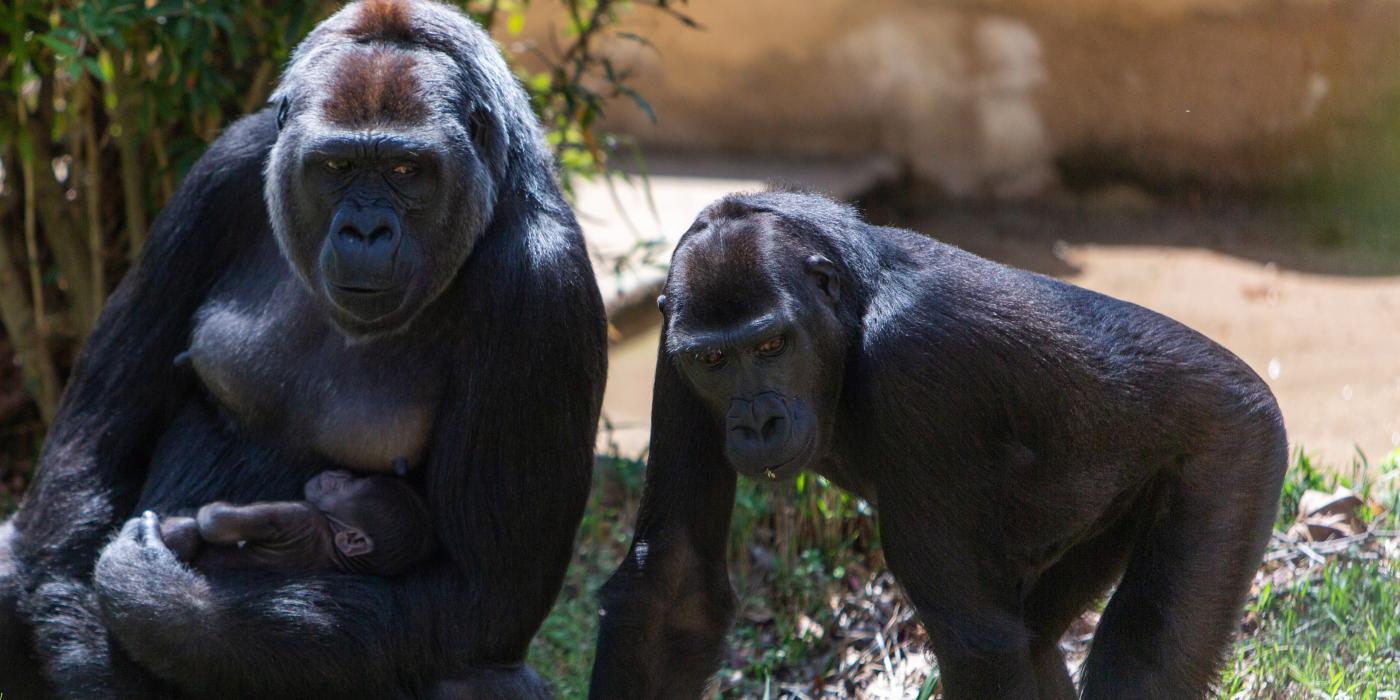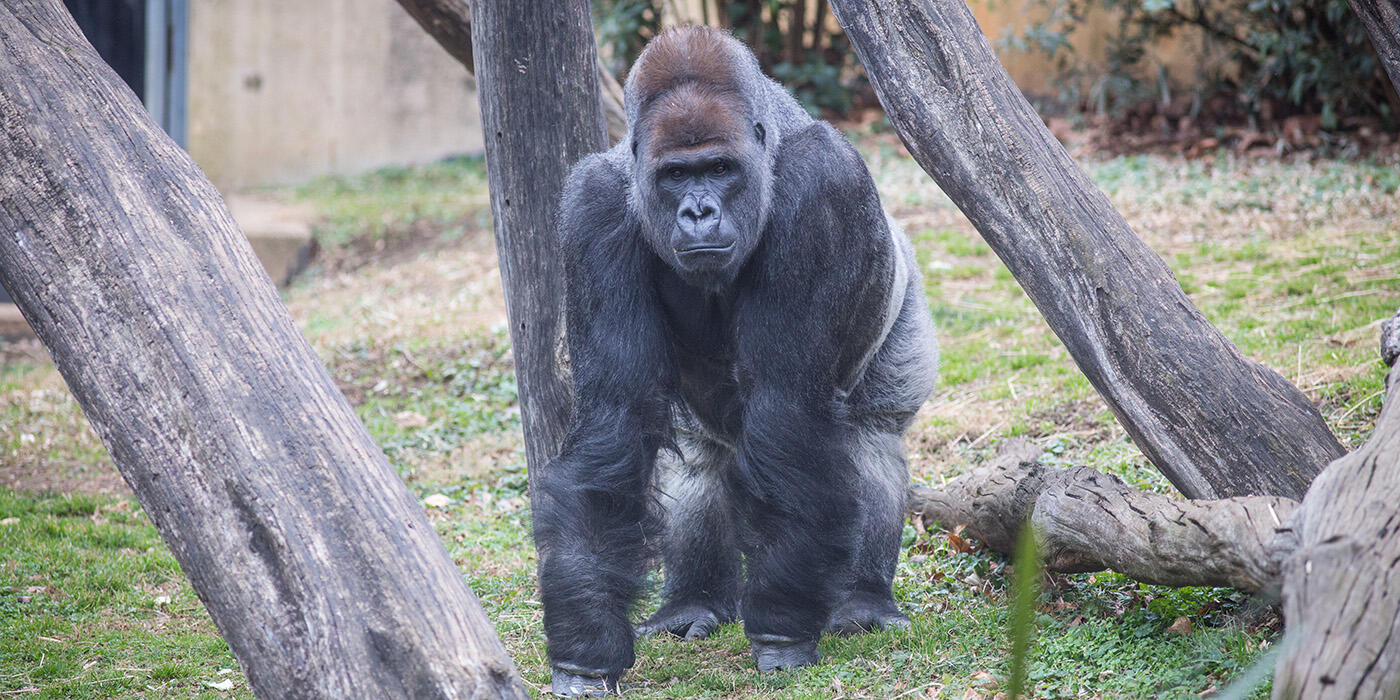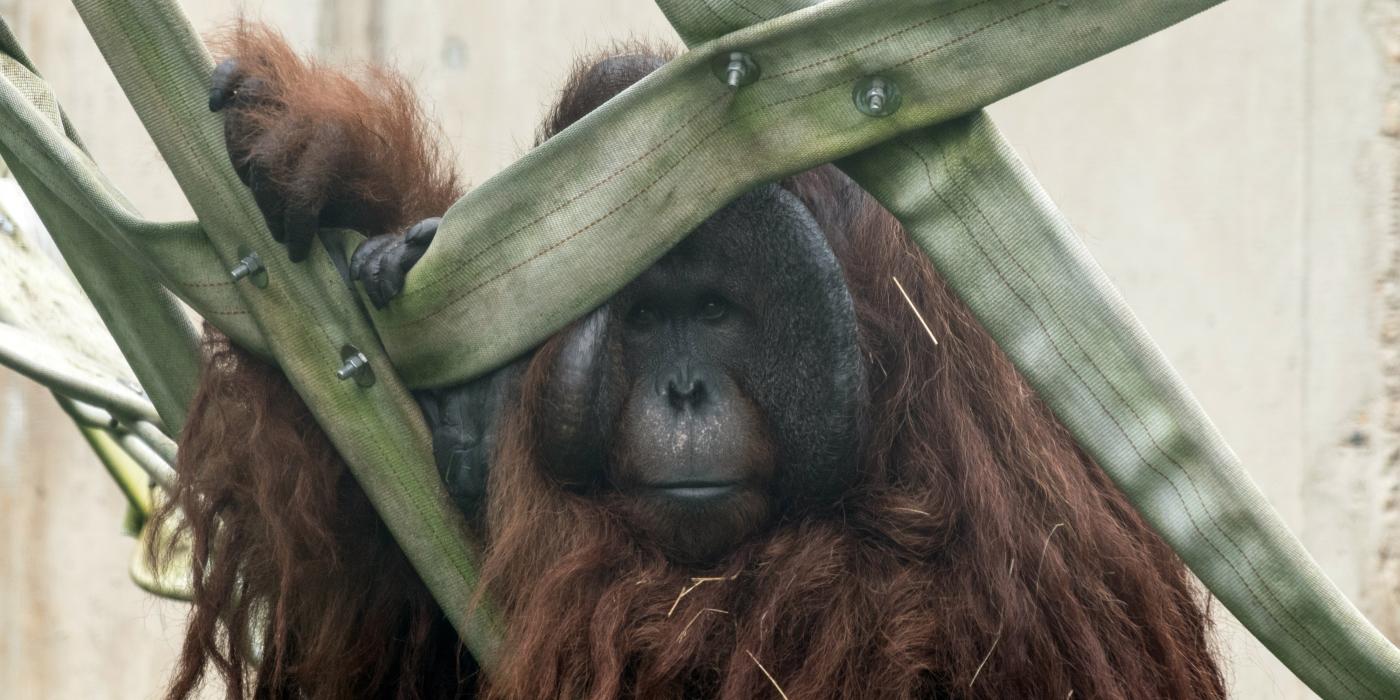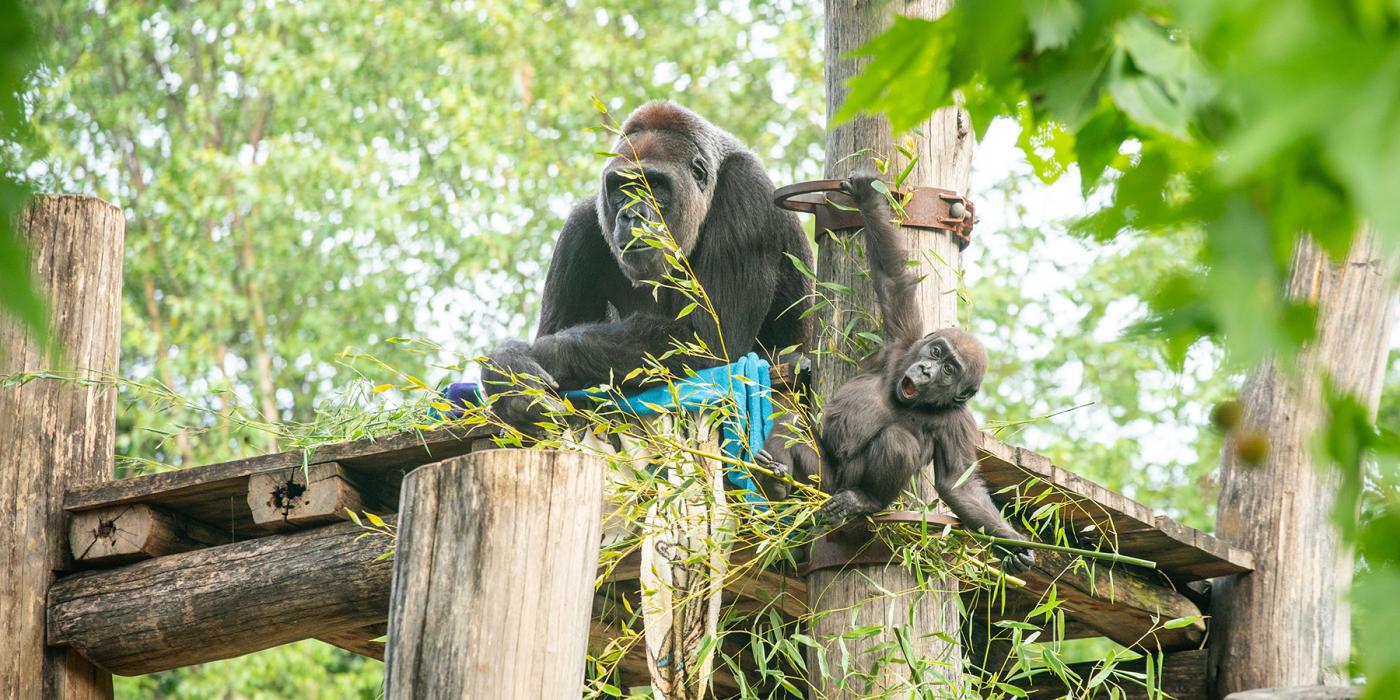#GorillaStory: Moke's on the Move
Moke’s on the move!
The 12-day-old western lowland gorilla at the Smithsonian’s National Zoo continues to do well. Warmer weather and sunshine graced Washington, D.C. this week, so primate keepers gave Baraka, Calaya, Moke, Mandara and Kibibi a chance to soak up some rays in the Great Ape House outdoor yard.
“Calaya negotiates the yard very well, even with Moke in tow,” said primate keeper Melba Brown. “She climbs to the top of the wooden platform and will sit and look out with Moke clinging tightly to her chest. Calaya will do a behavior that we call a display—running quickly from one end of the yard to the other—while holding Moke tightly in her arm. It is encouraging to see that her sassiness is back!”
Related Species:
